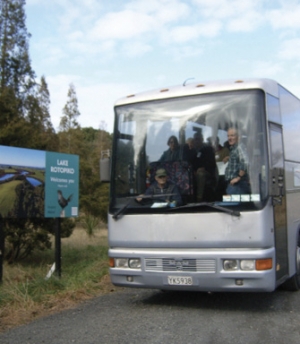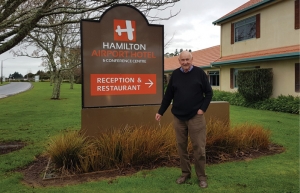Displaying items by tag: AGM 2018
Predator Free New Zealand
Maybe - but not just yet
- aims for a sustainable yield
- never takes more individuals than the population can replace
- can be like the constant harvest by rabbit trappers, deer cullers, and predators
- a population can’t be affected if the yield is not declining.
- protection of a valued resource can be ineffective unless broader ecological/ sociological context is understood
- the interaction of resource/habitat/ people defines the outcome
- solutions require strategic organisation, stakeholders agreement and effective methods
- the biology and strategic organisation determine effective policy (which DU does very well).
- Forgetting that nature is on the predators’ side and ignoring the effects of natural selection
- Counting numbers removed, not numbers remaining,
- Lack of coordinated, agreed strategy
- Lack of flexibility in response to experience
- Insufficient stakeholder support.
- Inefficient tools
- Failing to deploy combination of methods
- Having no effect on fertility, immigration.
- Operator confidence, meticulous preparation, sufficient funding
- Never repeating mistakes, never giving up, so accumulating improvements, combining/switching strategies when necessary
- Landscape scale coordination
- Strong community support.
New technology
- Adds to natural mortality
- Prevents immigration
- Targets fertility
- Confirms benefit to native species.
Waipa wars – from muskets to mustelids
CONFERENCE REPORTS
Neil Candy reported that Jim Law had replaced Ken Cook as a trustee on the Waterfowl and Wetland Trust, which was “ticking along really well” with more than $500,000 in the bank.
Wetland Care
Reporting on the work of Wetland Care, Will Abel said $10,800 had been spent on three wetlands in the past year, creating about 10 acres of wetland
BITTERN
WAIRIO WETLAND
Decisive year ahead for Board
Where to from here will be the big question facing the DUNZ Board in the coming year. President Ross Cottle, in opening the formal business of the 44th AGM, said that, with an ageing membership and fewer members keen to do the work, the future direction of Ducks Unlimited would be on the Board’s agenda this year.
Measures already in place or under consideration were making Flight a two-yearly publication and changing the conference to a biennial event rather than yearly. With fewer demands to create new wetlands and maintain the established ones, the Board would be looking at other ways, including research scholarships, to support DUNZ’s goals.
Ross thanked John Cheyne, who resigned earlier in the year, for his four years as president and for raising the profile of bittern. Ross also paid tribute to those members who had passed away during the past year: Ian Pirani, Nancy Pain, Audrey Pritt, Alan Wilk and Robin Borthwick. Joyce Brooks also passed away after the AGM.
Treasurer John Bishop presented the accounts and updated members on the new rules for charitable trusts, which require entities to state their purpose. DUNZ had submitted the following mission statement: “We deliver and advocate for effective wetland restoration, development, research and education; and support the preservation of threatened waterfowl and the ethical and sustainable use of wetlands.”


